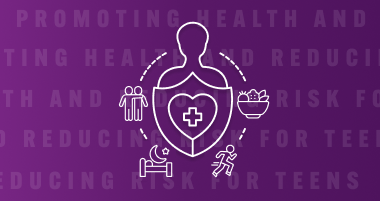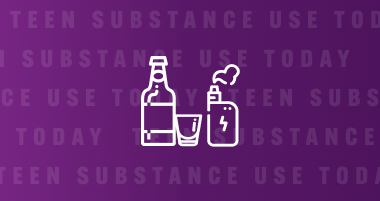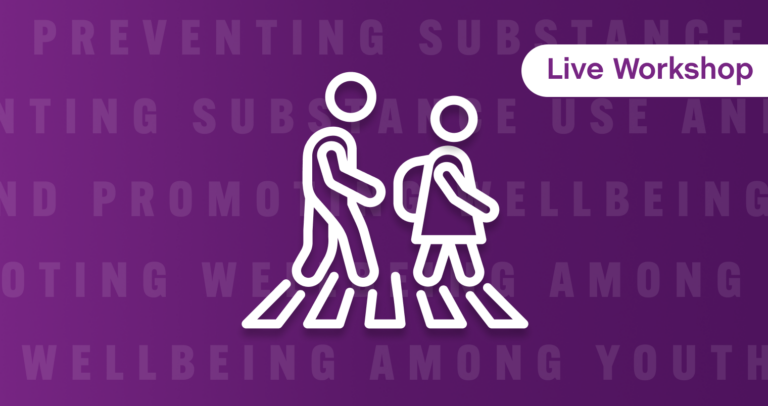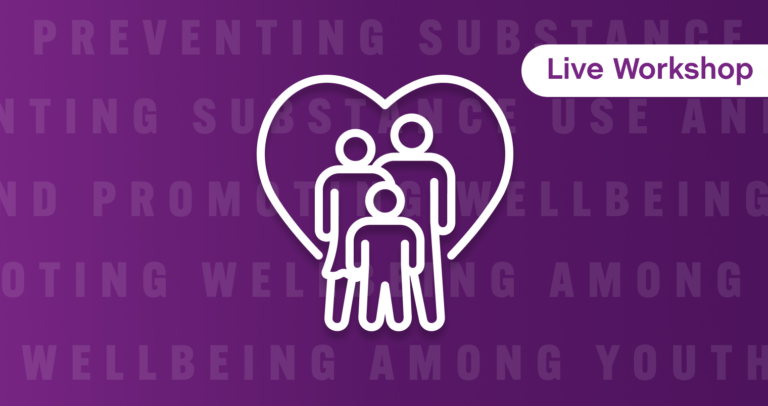
Promoting Health and Reducing Risk for Teens:
Essential Knowledge for School Personnel
Empower Your Staff to Build Student Resilience and Prevent Risky Behaviors
This six-module professional development course equips educators, counselors and other school-based personnel, as well as individuals working in other youth-serving settings, with practical strategies to strengthen student resilience and well-being. Grounded in the latest prevention science, the course focuses on enhancing protective factors—such as strong connections with trusted adults, emotional regulation, and healthy sleep habits—that are proven to help students flourish and thrive. Participants will also gain insights into identifying and addressing common risk behaviors, including bullying, gambling, and co-occurring mental health problems that often accompany substance use and other challenges to youth well-being. Designed for immediate application in school and other youth-serving settings, this training helps create a safer, more supportive environment where all young people can succeed and thrive.
Learn more about the different ways we offer this course:

Individual License
$79

Group Bundle
Bundled pricing for groups also available.
Course Overview
This asynchronous training was developed for school-based personnel, but the content is applicable to those working with youth outside of the school setting as well. Through a series of six 30-minute video modules, learners will discover focused, actionable insights that provide a broader understanding of protective factors that can promote the health and well-being of teenagers today, including improved resilience; strong connections to family, school and community; mental wellness; and adequate sleep. The impact of bullying, mental health challenges, and inadequate sleep will be discussed as contributing factors to risky behavior, like substance use and gambling. Learners will gain insight into their important role as trusted adults for helping to prevent youth mental health challenges and behavioral problems, as well as research-based strategies for recognizing when a student might be struggling and for responding effectively.
Learning Objectives
By taking this course, participants will:
- Gain a deeper understanding of the broad protective factors that influence the health and well-being of teenagers today, many of which can be supported and enhanced by school personnel and other youth-serving professionals.
- Learn how to recognize when a student may be struggling with mental health challenges, gambling/sports betting, or bullying behaviors/victimization.
- Understand the strong relationship between mental health and substance use issues and learn what trusted adults can do to try to prevent a range of mental and behavioral health challenges in young people.
Course Outline
This recorded workshop with accompanying slide deck begins with a brief introduction followed by six 30-minute video modules:
1. An Earlier and Broader Approach to Building Youth Resilience
- Resilience is one of the strongest protective factors against substance use, violence, mental health struggles, bullying, and so many other negative risk behaviors and common teenage challenges. This module discusses what resilience is, why it’s so important, and how we can foster it in young people.
2. Health Promotion through School & Community Connection
- This module covers connectedness, an important protective factor for young people. When teens feel a sense of belonging with and connection to their family, school environment, and larger community, their risk for a host of negative behaviors and life outcomes decreases.
3. Addressing Co-Occurring Mental Health and Substance Use Disorders
- Mental health issues and substance use have a bi-directional relationship–meaning as the risk for one increases, so does the risk for the other. It is very common for young people struggling with mental health challenges to also have substance use issues. This module discusses the relationship between the two, how youth-serving professionals can recognize when a student may be struggling before the problem becomes severe, and what effective treatment looks like.
4. Bullying and Cyberbullying Prevention
- This module explores the risk and protective factors for both bullying victimization and perpetration. It discusses the issue of cyberbullying, and how it differs from in-person bullying, as well as how bullying can be distinguished from other forms of threat or harassment. School personnel and other youth-serving professionals will gain an understanding of how to spot bullying behavior and how they can intervene effectively. The module also presents evidence-based programs that reduce bullying in school environments.
5. The Importance of Sleep for Teens
- It’s probably no surprise to educators that most teenagers are not getting enough sleep. This module discusses the importance of sleep as a protective factor against negative health, emotional, social, and academic outcomes and makes the case for inadequate sleep as a community public health problem. School staff and other youth-serving professionals will learn strategies for supporting students in getting more (and better quality) sleep.
6. Gambling Prevention
- This module delves into gambling, an issue becoming more prevalent in U.S. schools as states increasingly legalize sports betting. It explores what gambling is, what types of gambling/betting young people are most likely to partake in, what drives them to do so, what the potential harms are, how educators and other youth-serving professionals can spot if a young person may have a problem, and how best to intervene.
Your Instructor
The content for this course was created in collaboration with Linda Richter, PhD, Partnership’s Senior Vice President, Prevention Research and Analysis. Dr. Richter’s work focuses on understanding the nature, scope, predictors, and consequences of substance use and addiction, especially among young people.
Completion & Continuing Education (CE) Information
Upon request, a certificate of completion can be sent after completion of the course. Contact our team at solutions@toendaddiction.org for more information.
Pricing Details
- For this asynchronous training, registration is automated with no date related restrictions.
Our Refund Policy, Cancellation Policy, and Accessibility Accommodations
- Full refunds are issued only if a training is canceled by Partnership to End Addiction or at the discretion of Partnership to End Addiction based on written request.
- For partial refund of a Partnership to End Addiction training, registrants must withdraw prior to beginning the course.
- We value inclusion and access for all participants and have worked to design the training for a variety of learners. Content includes non-captioned audio materials.
Course Interactions & System Requirements
This course is completely self-paced. Course questions can be directed to: solutions@toendaddiction.org.
System requirements
- Operating Systems: Windows XP or higher, MacOS 9 or higher, Android 4.0 or higher
- Internet browser: Internet Explorer 9.0 or higher, Google Chrome, Firefox 10.0 or higher
- Broadband Internet connection: Cable, High-speed DSL & any other medium that is internet accessible.
- Media viewing requirements: Adobe Reader, Flash Player, & HTML5
Other Courses You Might Like

Teen Substance Use Today: Essential Knowledge for School Personnel
Equip yourself with foundational prevention knowledge and gain the tools to recognize early warning signs and support healthier student outcomes.
Learn more
Preventing Substance Use and Promoting Wellbeing Among Youth: Parent/Community Informational Series
Help the parents and other caregivers in your community build practical skills for fostering youth resiliency, substance use prevention, and early intervention.
Learn more
Preventing Substance Use and Promoting Wellbeing Among Youth: Professional Development Series
Build practical skills for fostering youth resiliency, substance use prevention, and early intervention.
Learn more


